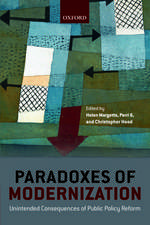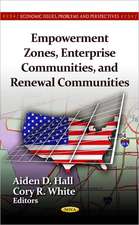Bioassessment of Freshwater Ecosystems: Using the Reference Condition Approach
Autor Robert C. Bailey, Richard H. Norris, Trefor B. Reynoldsonen Limba Engleză Paperback – 30 oct 2012
| Toate formatele și edițiile | Preț | Express |
|---|---|---|
| Paperback (1) | 635.01 lei 6-8 săpt. | |
| Springer Us – 30 oct 2012 | 635.01 lei 6-8 săpt. | |
| Hardback (1) | 639.59 lei 6-8 săpt. | |
| Springer Us – 30 noi 2003 | 639.59 lei 6-8 săpt. |
Preț: 635.01 lei
Preț vechi: 747.06 lei
-15% Nou
Puncte Express: 953
Preț estimativ în valută:
121.53€ • 126.40$ • 100.33£
121.53€ • 126.40$ • 100.33£
Carte tipărită la comandă
Livrare economică 15-29 aprilie
Preluare comenzi: 021 569.72.76
Specificații
ISBN-13: 9781461347057
ISBN-10: 146134705X
Pagini: 184
Ilustrații: X, 170 p.
Dimensiuni: 155 x 235 x 10 mm
Greutate: 0.27 kg
Ediția:Softcover reprint of the original 1st ed. 2004
Editura: Springer Us
Colecția Springer
Locul publicării:New York, NY, United States
ISBN-10: 146134705X
Pagini: 184
Ilustrații: X, 170 p.
Dimensiuni: 155 x 235 x 10 mm
Greutate: 0.27 kg
Ediția:Softcover reprint of the original 1st ed. 2004
Editura: Springer Us
Colecția Springer
Locul publicării:New York, NY, United States
Public țintă
ResearchCuprins
Bioassessment Of Freshwater Ecosystems.- 1. Introduction.- 2. Key concepts.- 3. Development of the Reference Condition Approach.- 4. Points to remember.- To The Case Studies.- 1. Sediment assessment of the near shore environment of North American Great Lakes.- 2. Fraser River (British Columbia) biomonitoring program.- 3. Spring and Autumn Assessment of Streams in the Australian Capital Territory.- 4. Points to remember.- Defining The Reference Condition.- 1. Define the objectives of the study.- 2. Determine the spatial extent, time-scale and grain-size of the study.- 3. Determine the criteria for acceptable reference sites.- 4. Determine the appropriate number and locations of reference sites.- 5. Choose descriptors of the benthic invertebrate community and its environment.- 6. Design a data storage and management system.- 7. Ensure data quality.- 8. Case Studies.- 9. Points to remember.- Variation In The Reference Condition.- 1. Why characterizing reference site variation is important.- 2. How to describe variation among reference sites.- 3. Case Studie.- 4. Why it is important to model and explaine variation among reference sites.- 5. How to model variation among reference sites.- 6. Why residual variation among reference communities is important.- 7. Case studies.- 8. Points to remember.- Decision-Making.- 1. Why do we need decision rules on passing and failing test sites.- 2. How are decision rules arrived at.- 3. Sensitivity of assessments: how often do real test sites fail.- 4. Case Studies.- 5. Points to remember.- Beyond Pass And Fail.- 1. Severity of fail: Magnitude and nature of deviation from Reference Condition.- 2. Why did it fail.- 3. Scenario building: What will be the effect of rehabilitation or stress.- 4. Points to remember.- The Reference Condition Approach.- 1. Bioassessment of freshwater ecosystems using the Reference Condition Approach.- 2. Case Studies.- 3. Defining the Reference Condition.- 4. Describing and modeling variation in the Reference Condition.- 5. Decision-Making.- 6. Beyond Pass and Fail.- 7. Finish.- References.













